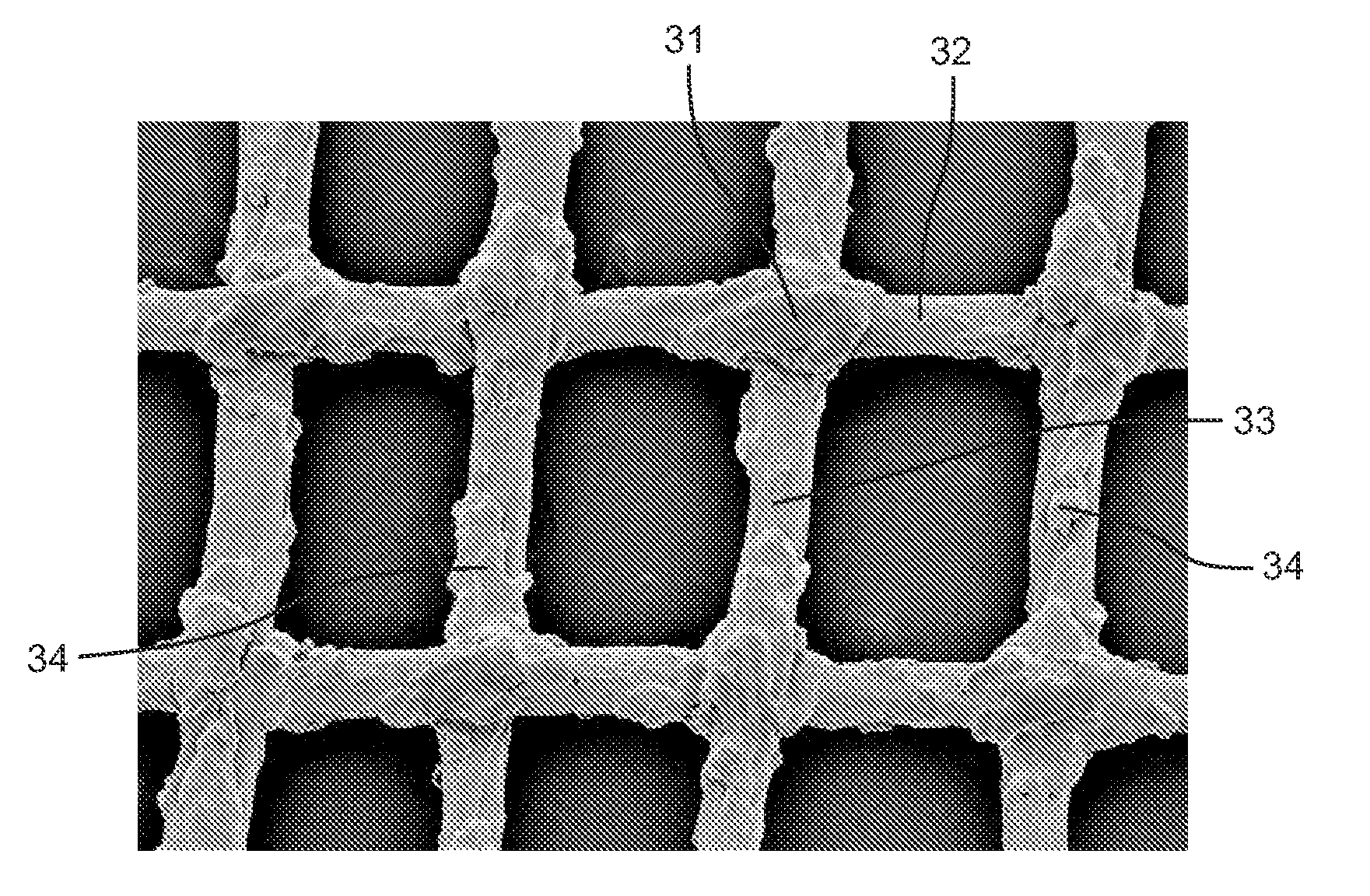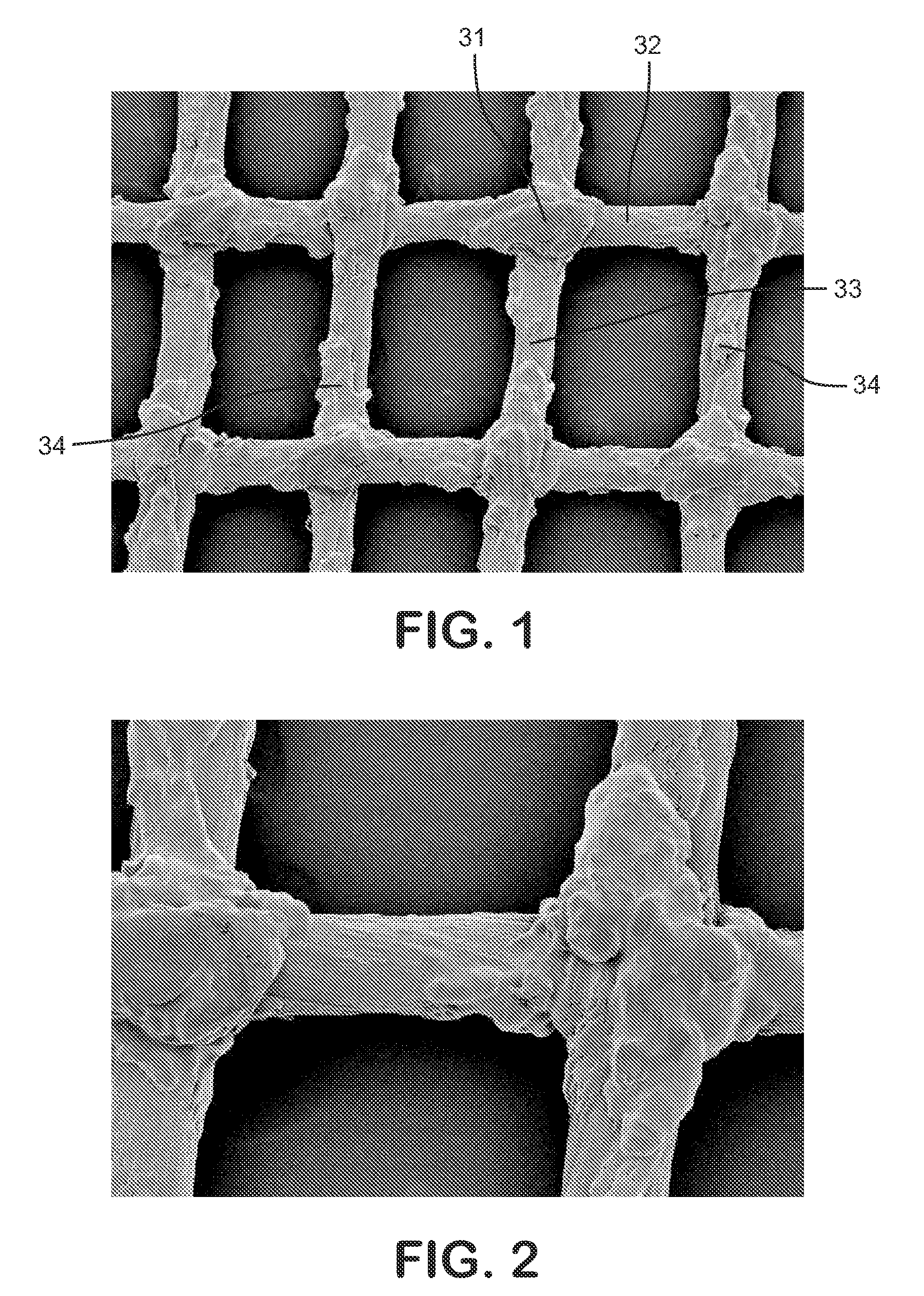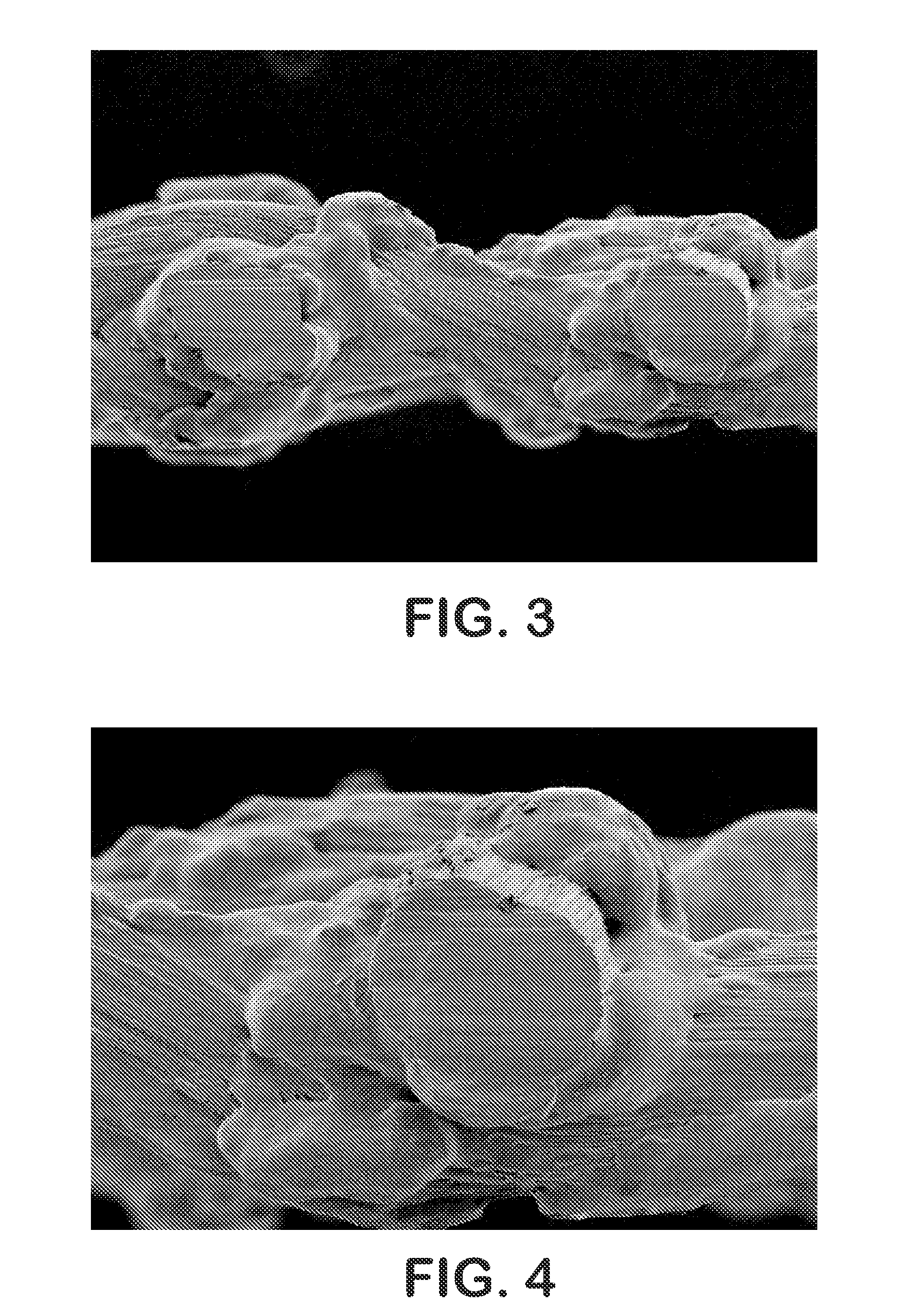PTFE Fabric Articles and Method of Making Same
a technology of ptfe fabric and ptfe thread, which is applied in the field of unique ptfe fabric articles, can solve the problems of ineffective modification of bulk substrate properties, porosity and permeability, and treatment with or following amorphous locking, and achieve the effect of minimizing movement or slippage of fibers
- Summary
- Abstract
- Description
- Claims
- Application Information
AI Technical Summary
Benefits of technology
Problems solved by technology
Method used
Image
Examples
example 1a
[0058]Nominal 90 denier (“d”) ePTFE round fiber was obtained (part # V112403; W.L. Gore & Associates, Inc., Elkton, Del.) and woven into a structure having the following properties: 31.5 ends / cm in the warp direction by 23.6 picks / cm in the weft direction.
[0059]This woven article was plasma treated with an Atmospheric Plasma Treater (model number ML0061-01, Enercon Industries Corp., Menonomee Falls, Wis.) using argon gas. The process parameters were: argon flow rate of 50 L / min, power source of 2.5 kW, line speed of 3 m / min, 7.6 cm electrode length, 10 passes. The woven plasma treated article was restrained on a pin frame and placed in a forced air oven (model number CW 7780F, Blue M Electric, Watertown, Wis.) set to 350 deg C. for 30 min.
[0060]The article was removed from the oven and quenched in water at ambient temperature, then it was examined with a scanning electron microscope. Scanning electron micrographs (“SEMs”) of the surface of this article appear in FIGS. 1 and 2 at mag...
example 1b
[0063]Nominal 90d ePTFE round fiber was obtained (part # V112403; W.L. Gore & Associates, Inc., Elkton, Del.), and a woven structure was formed with this fiber having the following properties: 31.5 ends / cm in the warp direction by 23.6 picks / cm in the weft direction.
[0064]The woven article was plasma treated with an Atmospheric Plasma Treater (model number ML0061-01, Enercon Industries Corp., Menonomee Falls, Wis.) using argon gas. The process parameters were: argon flow rate of 50 L / min, power source of 2.5 kW, line speed of 3 m / mini 7.6 cm electrode length, 10 passes.
[0065]The woven plasma treated article was restrained on a pin frame and placed in a forced air oven (model number CW 7780F, Blue M Electric, Watertown, Wis.) set to 350 deg C. for 15 min. The article was removed from the oven and quenched in water at ambient temperature, then the article was examined with a scanning electron microscope and tested for resistance to fraying (fiber removal) in accordance with the test m...
example 2
[0074]Nominal 90d ePTFE round fiber was obtained (part # V112403; W.L. Gore & Associates, Inc., Elkton, Del.), and a woven article was created with this fiber having the following properties: 49.2 ends / cm in the warp direction by 49.2 picks / cm in the weft direction.
[0075]The woven article was plasma treated with an Atmospheric Plasma Treater (model number ML0061-01, Enercon Industries Corp., Menomonee Falls, Wis.) using argon gas. The process parameters were: argon flow rate of 50 L / min, power source of 2.5 kW, line speed of 3 m / min, 7.6 cm electrode length, 5 passes.
[0076]The woven plasma treated article was restrained on a pin frame and placed in a forced air oven (model number CW 7780F, Blue M Electric, Watertown, Wis.) set to 350 deg C. for 15 min. The article was removed from the oven and quenched in water at ambient temperature.
[0077]The article was examined with a scanning electron microscope and tested for fray resistance using the fiber removal test described above. Scannin...
PUM
| Property | Measurement | Unit |
|---|---|---|
| Structure | aaaaa | aaaaa |
| Shape | aaaaa | aaaaa |
Abstract
Description
Claims
Application Information
 Login to View More
Login to View More - R&D
- Intellectual Property
- Life Sciences
- Materials
- Tech Scout
- Unparalleled Data Quality
- Higher Quality Content
- 60% Fewer Hallucinations
Browse by: Latest US Patents, China's latest patents, Technical Efficacy Thesaurus, Application Domain, Technology Topic, Popular Technical Reports.
© 2025 PatSnap. All rights reserved.Legal|Privacy policy|Modern Slavery Act Transparency Statement|Sitemap|About US| Contact US: help@patsnap.com



